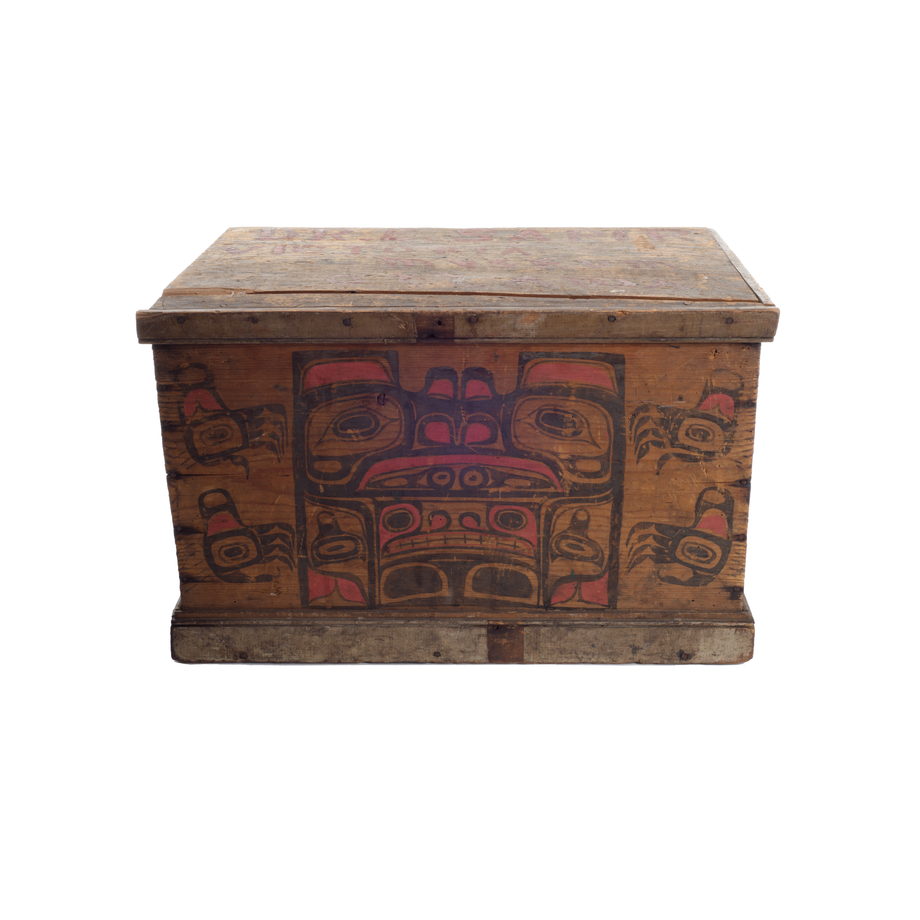K´awat´si
Treasure Box
Treasure boxes are of great importance to the Kwakwaka’wakw and are used for storing a family’s most valuable treasures such as dance blankets, masks, and whistles. A beaver’s tooth was used to add texture to the surface of the box.
Owner
Waxawidi
More Information
This chest illustrates an attempt of artistic adaptation in a time of cultural changes and repression, the 1920s and 1930s. The box was made using nails and sawn planks, and painted with crest designs on all four sides. The formline designs that decorate this chest are interesting examples of Kwakwaka’wakw freehand painting. It is probably the work of Charlie James. His Kwak´wala name, 'Yakuglas' is written in red paint on the back.
Catalogue Information
Materials
Wood, Cedar; Paint; Metal, Nails
Accession Number
VII.E.533
Physical Description
Small chest made of wooden planks nailed together. Now damaged, the lid is hinged to the box. Wooden slats are nailed onto the rim; one slat is missing. Baseboard planks are nailed on all four sides. The sides display four different formline designs painted in black and red on natural wood.
The front crest has the features of a bear with oversized head and compact body. Disconnected from this body, the feet and paws are painted on both sides. This detached representation is characteristic of a Kwakwaka’wakw style. The left side clearly displays a bird, probably a raven. It is inscribed within a rectangle (expansive design), leaving large borders of unpainted wood on both sides. The crests decorating the other panels are more difficult to interpret. On the right side, the design is somehow abstract. One can recognize a beaked half-face in the middle, and a feathered wing.
The back design is very similar in construction to the front, with a creature represented in split-profile view and two separate elements on both sides. They are most likely the main creature's dorsal fins. The whole side could represent a sea monster based on the whale or killer whale.
The front echoes the back in style; the left and right sides share a common theme. The designs thus ought to be interpreted in pairs. The same avian creature is represented on the sides from different perspectives. On the front, the “fin” designs painted within the bear’s body would make more sense if we consider that the front and back feature the same “chimera”. (Quentin Ehrmann-Curat, 2016).
